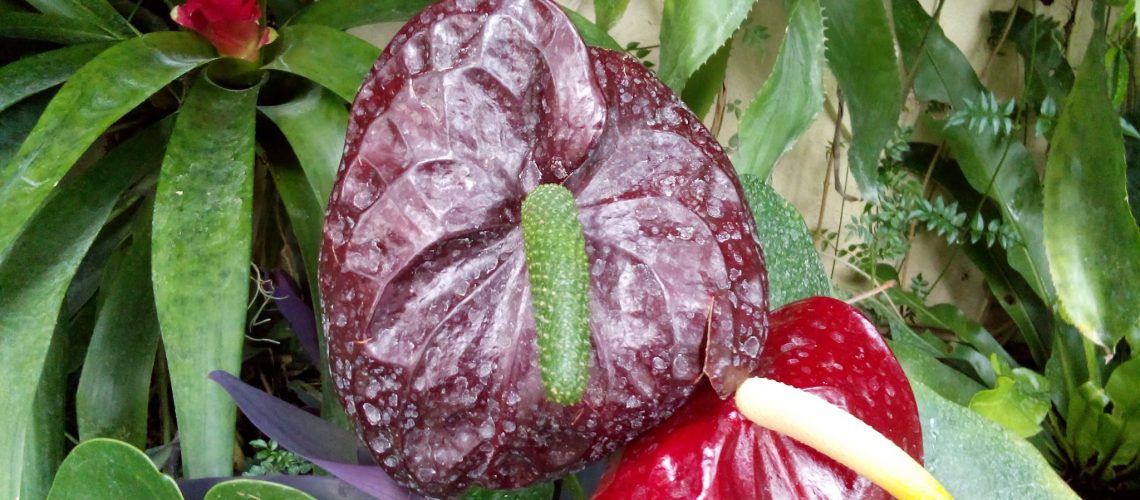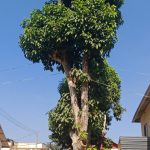Protein synthesis simplified
- The information for synthesis of proteins is contained in the DNA.
- From DNA the message is transferred to m-RNA and in the cytoplasm the information contained in the m-RNA is translated into proteins.
- This is the Central Dogma of Molecular Biology
- Here the process of transferring information from DNA to RNA is called transcription ( making a copy) and the information contained in the DNA is transcribed into an m-RNA. The m-RNA so formed provides information to synthesize corresponding protein in the cytoplasm and this process is called translation (conversion of m-RNA language in the form of triplet codons to corresponding amino acid language and form a polypeptide chain
- In Prokaryotic cells both transcription and translation happen simultaneously and is non-compartmentalised as there is no nuclear membrane to delimit the DNA from the cytoplasm.
- Whereas in Eukaryotic cells transcription takes place first in the nucleus and from the nucleus newly formed m-RNA moves to the cytoplasm through the nuclear pore.
- Later Translation takes place in the cytoplasm and hence here transcription and translation are said to be compartmentalised and sequential.
Requirements for Protein synthesis
- DNA
- RNA (m-RNA, r-RNA, t-RNA)
- Ribosomes
- Amino acid pool
- Aminoacyl synthases/synthetases
- Initiation factors
- Elongation factors
- Termination factors
- Release factors
Process of Protein Synthesis
- Synthesis of proteins in the cell is an anabolic function which includes a number of carefully guided steps.
- Protein Synthesis takes place in two stages – Transcription and Translation
- There are slight variations in the process for both Prokaryotes and Eukaryotes which has been explained in the course of the process
I Transcription
- This is the initial phase of Protein synthesis.
- The information required for synthesising a protein is contained in the DNA molecule as a sequence of nucleotides.
- The nucleotides are organised in the form of triplet codons which each code for a particular amino acid.
- This genetic information present in the DNA is transferred onto the m-RNA (messenger RNA).
- Based on the cell’s requirement for proteins, the corresponding region of the DNA undergoes uncoiling.
- One of the strands of DNA acts as the template for transcription from which the m-RNA is copied. It is the 3’-5’ strand and is called Template strand or coding strand or sense strand. The 5’-3’ strand of DNA is called the non-template or non-sense or non-coding strand.
- The sequence on m-RNA is complementary to the template strand and same as that of the non-template strand except that in the place of thymine in DNA Uracil is present in m-RNA. Hence some authors prefer to call the template strand as the Non-sense strand which is also logical.
- Every gene sequence coding for a polypeptide chain is called a Cistron and the starting point of the gene is called the Promoter which is also called the TATA box region as it shows TATATA sequences.
- The enzyme involved in RNA synthesis is called a DNA –dependent RNA polymerase and is responsible for the synthesis all the three types of RNA –m-RNA, r-RNA and t-RNA.
- At the start of transcription, the DNA helix uncoils and the protein called transcription factor binds to the promoter region of the gene to be transcribed.
- Next the DNA-dependent RNA polymerase binds to the transcription factor to initiate transcription. This is called the Initiation phase.
- Once transcription is initiated RNA Polymerase continues to add nucleotides complementary to the sequence on the sense strand of DNA and thus the m-RNA strand is lengthened.
- This is called the elongation phase. As the RNA elongates, the RNA Pol enzyme moves down the gene soon it encounters a stop signal in the DNA sequence.
- It may be ATT, ATC or ACT and it will be coded as stop codons UAA, UAG and UGA in the m-RNA.
- This marks the end of transcription and the newly synthesised m-RNA molecule is released and the DNA is rewound. This is called the termination phase.
- There is only one RNA polymerase involved in transcription for Prokaryotes while for Eukaryotes there are three : 1) RNA polymerase I- which gives rise to m-RNA and RNA polymerase III that are involved in r-RNA and t-RNA synthesis and RNA Polymerase II which produces the hn RNA (heterogenous nuclear RNA) that finally gives rise to the m-RNA
- In the case of Eukaryotes, the RNA molecules thus formed come out of the nucleus through the nuclear pore and reach the cytoplasm, where they are involved in the next stage of Protein synthesis called Translation
II Translation
Transfer of information present in m-RNA to form proteins is called Translation. This process has many sub-stages. The sub-stages are:
- Activation of Amino acid
- Transfer of Amino acid to t-RNA
- Initiation of Polypeptide chain
- Elongation of Polypeptide chain
- Termination of Polypeptide chain
- Modification and release of Polypeptide
- Activation of Amino acid
- There are twenty two amino acids. Each amino acid has one or more codons, but no two amino acids have the same codon as there are 64 codons for only 22 amino acids.
- There is an amino acid pool present in the cytoplasm but will not directly take part in protein synthesis. These amino acids must be activated for which ATP and an enzyme called Aminoacyl synthase are required.
- There are 40 of these enzymes in the cell and each of these must be able to identify the different t-RNA molecules to which they have to bind.
- The Aminoacyl synthases have dual specificity.
- At one end it binds to a specific amino acid and at the other end it binds to the corresponding t-RNA for that amino acid.
- This is called Aminoacylation of t-RNA and during this process ATP is used and gets hydrolysed and converted to AMP (Adenosine monophosphate) by the release of two pyrophosphates.
- Transfer of Amino acid to t-RNA
The particular amino acid present in the amino acid pool gets linked to the specific t-RNA for that amino acid through the Aminoacyl synthase and then the enzyme is freed from the complex.
- Initiation of the Polypeptide chain
The Polypeptide chain is initiated by the Initiation factors which are of three types IF1, IF2 and IF3 in Prokaryotes
In Eukaryotes they are eight and designated as eIF2, eIF2B, eIF3, eIF4B, eIF4C,eIF4F, eIF5 and eIF6.
In the formation of the polypeptide chain the first added amino acid is Methionine which has AUG as the codon which is also the Initiation codon. In Eukaryotes it is only Methionine while in Prokaryotes it is formylated methionine (fMet).
There are four steps in the initiation of the Polypeptide chain
- Formation of formyl methionine t-RNA (fMet- t-RNA)
Here the initiator amino acid and t-RNA are activated
- Binding of 30S subunit to m-RNA
When the ribosome is not involved in Protein synthesis the two subunits 30 S and 50S lie free in the cytoplasm. They will come together only with the help of the initiation factors IF1 and IF3 that bind to the 30S subunit and help it bind to m-RNA (Figure 1). In Eukaryotes this step is accomplished by eIF3,eIF4C and eIF6. The site where the ribosome binds to m-RNA is called ribosome binding site or Shine-Dalgarno sequence that helps to place the ribosome at the correct location without missing out the initiation codon
- Binding of Formyl methionine t-RNA to 30S –m –RNA complex:
IF1 makes IF2 catalyse the reaction between formyl methionine t-RNA and 30-S –m-RNA to form the Initiation Complex called Formyl –methionine-t-RNA-30-S-m-RNA complex. IF3 is now released (Figure 2). Eukaryotic initiation factors such as eIF4B and eIF4F are involved in this step
- Association of ribosomal sub-units:
50S sub-unit now attaches to the 30S -Initiation complex and IF1 and IF2 are released at this stage. The A-site and P-site are located on the 50S sub-unit where A-site is called Aminoacyl site and P-site is called Peptidyl site. This complex is now called the 70S Initiation complex
In Eukaryotes : A few differences are seen in the initiation of the Polypeptide chain
- There are 8 initiation factors instead of three
- There is simply methionine and not formyl methionine as the initiator amino acid
- The 40S sub-unit does not bind to the m-RNA directly
- Elongation of the Polypeptide chain
By the continuous addition of Amino acids elongation of the new polypeptide chain takes place. Three Elongation factors are involved and in Prokaryotes these are designated as EF- Tu (Temperature unstable) , EF –Ts (Temperature stable) and EF-G (Translocase) while in Eukaryotes these are designated as EF-1α, EF-1βγ and EF-2 respectively. Elongation of the Polypeptide chain takes place in three steps:
- Aminoacyl-t-RNA delivery
Once the initiation complex is formed elongation of Polypeptide chain starts. The fmethionine (in Prokaryotes) or methionine (in Eukaryotes) corresponding to the initiator codon is brought in to the initiation complex and enters the larger subunit at the P-site. This is the only aminoacyl-t-RNA that is able to enter through the P-site , while all other aminoacyl –t-RNA s can enter only at the A-site. The elongation factor EF-Tu and GTP are used for this. GTP is hydrolysed to GDP and EF-Tu-GDP complex is formed. Later EF-Ts helps to displace the EF-Tu-GDP complex and EF-Tu – GTP is regenerated which can in turn bring in the third amino acid according to the information on the m-RNA. This continues to be repeated till the entire information is read. This complex formation is not seen in the case of initiator t-RNA alone.
This step is the same in Eukaryotes also but the elongation factors are EF-1α, EF-1βγ and EF-2 instead of EF- Tu (Temperature unstable) , EF –Ts (Temperature stable) and EF-G (Translocase)
- Peptide Bond Formation
The Initiator or first amino acid always occupies the P-site and the A-site is empty. The relative movement of the ribosome along the m-RNA causes the second codon to be read and accordingly the second aminoacyl-t-RNA is brought to the A-site. Now a peptide bond is formed between the first and second amino acid and results in a dipeptide. This continues in the same way and ultimately a Polypeptide chain is formed
- Translocation
Once peptide bond is formed between first aminoacid and the second, the t-RNA bringing in that amino acid can be released or discharged from the P-site. The peptidyl t-RNA of second aminoacid moves from A-site to P-site leaving the A-site free for the third aminoacyl-t-RNA to enter. At the same time the m-RNA moves by one codon and relative to the ribosome and a new codon is available at the A-site. All these events are under the control of EF-G (translocase) and GTP to provide energy
The ribosome thus is in contact with 6 nucleotides at a time and so the chances of frame shift are very much reduced
These three steps are repeated in a cyclical manner for each codon that is read by the ribosome on the m-RNA until one of the three stop codons is encountered
Polysome or Polyribosome
After the ribosome has translated 70 to 80 nucleotides on the m-RNA a second ribosome can occupy the ribosome binding site and can begin translating the m-RNA and so on thus multiple ribosomes may be attached to an m-RNA forming a polysome or polyribosome
- Termination of the Polypeptide chain
When a stop codon on the m-RNA is reached it cannot be recognised by the t-RNAs as there are no specialised t-RNAs for stop codons and hence for this purpose there are special release factors or termination factors which are three in Prokaryotes namely RF1, RF2 and RF3 while in Eukaryotes there is only one designated as eRF.
RF1 recognises the stop codons UAA and UAG while RF2 recognises UAA and UGA and RF3 helps RF1 and RF2 to carry out their functions but in Eukaryotes the single eRF recognises all the three stop codons. These release factors are involved in transferring the polypeptide to water so that it can be released from the m-RNA-ribosome complex. Also the release factors remove the uncharged t-RNA and bring about dissociation of the ribosomal sub-units once protein synthesis is completed
- Modification and Release of Polypeptide/ Post-Translational modification of Proteins
- The polypeptide chain formed during protein synthesis undergoes modification before it becomes a functional protein.
- This could happen in a variety of ways depending upon the nature of the protein
- The different ways of Post translational modifications include Polyproteins, Protein targeting, Cleavage, Folding, Chemical Modification and Protein degradation
Polyproteins
- The single polypeptide chain produced at the end of translation may split up to form two or more proteins.
- Proteases are used to break up the proteins into two or more functional parts.
- Such proteins are called Polyproteins and are seen in many viruses like bacteriophages and in the case of certain hormones in eukaryotes
Protein Targeting
- Certain proteins have specific cellular locations that are determined by special short amino acid sequences that form part of the protein itself.
- For example transport of Histone proteins to the nucleus
- In such cases when the sequences is getting translated, a special ribonucleoprotein (RNP) called signal recognition particle (SRP) binds to the peptide being form and stops translation.
- Then this residue is transported to the appropriate location and the SRP is released. Now translation proceeds and the mature peptide is formed .
- This is then Glycosylated to determine the final location of the protein
Cleavage, Folding and Chemical Modifications
- Newly synthesised polypeptide chains or nascent polypeptides have to be modified chemically or by removal of residues either at the N-terminus or the C-terminus to make them mature and functional polypeptides.
- Apart from this the protein has to undergo folding in the proper manner to be able to acquire its specific function.
- Cleavage refers to removal of aminoacid residues at both N and C termini but sometimes certain internal peptides may also be removed.
- Chemical modification refers to acetylation, hydroxylation, methylation, phosphorylation or glycosylation either at N or C terminus.
- For example Proline undergoes Hydroxylation during the formation of collagen and some histone proteins undergo acetylation before they become functional.
- Enzymes like Glycogen phosphorylase and in the case of certain transcription factors activation of the protein requires it to undergo phosphorylation before it can function normally.
Protein degradation
- Different proteins have different lifetimes and must be degraded when they are not required or when they are faulty or damaged.
- The cell is able to accomplish this by adding Ubiquitin to the N-terminal.
- Then it is degraded by Proteasome (protease complex) with the help of ATP energy and finally Ubiquitin is released to be used again
- Thus the end product of Translation undergoes changes, additions and deletions before it can be activated to perform to the best of its ability











